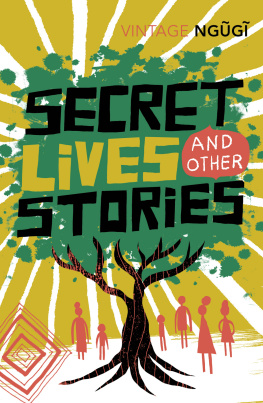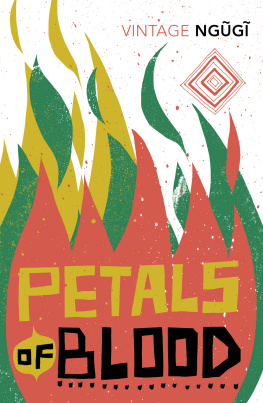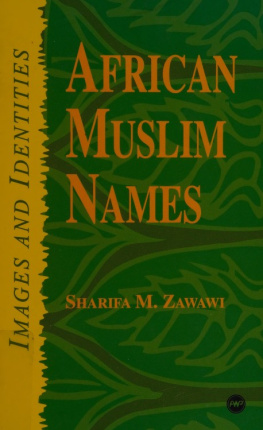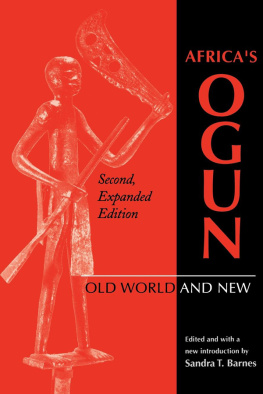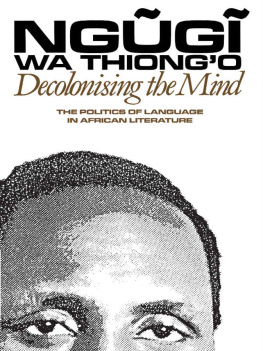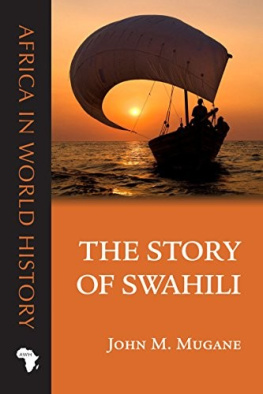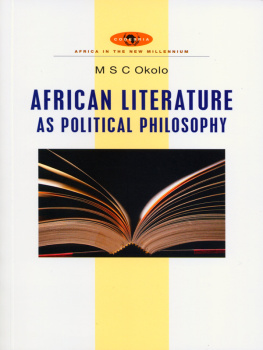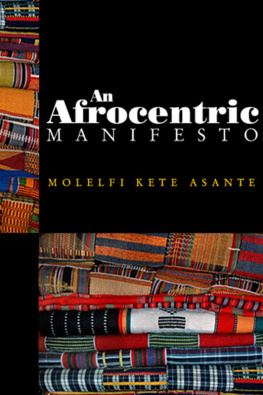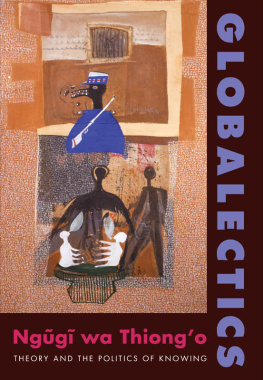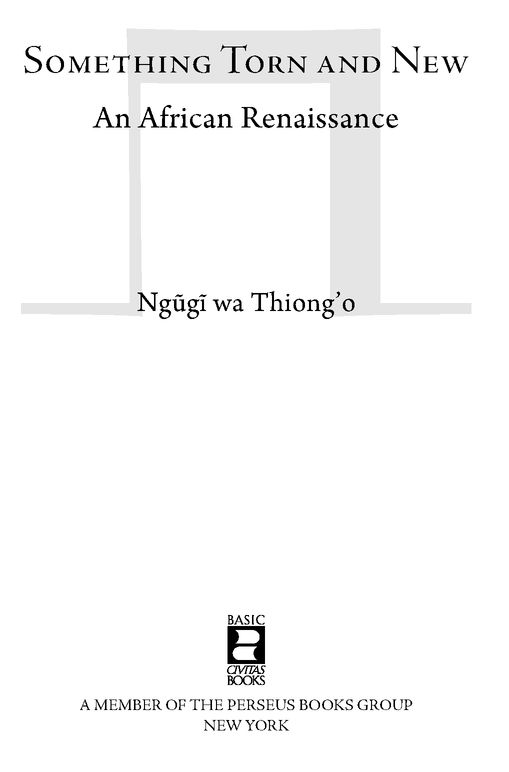Table of Contents
For Sonia Sanchez, Amiri Baraka, Ntongela Masilela,
Haunani-Kay Trask, Michael Neill,
Tim Reiss, and Pat Hilden
And in memory of the late Ngg wa Mri,
Apollo Njonjo, Kmani Roki, and Ime Ikiddeh
PREFACE
When in 2002 I accepted Professor Henry Louis (Skip) Gatess invitation to give the 2006 McMillan-Stewart Lectures at Harvard, I had no particular subject in mind. The germ of the theme of memory and renaissance that now runs through this book was originally expressed in the 2003 Biko Memorial Lecture (currently Chapter 4), that I gave at the University of Cape Town, South Africa. I took up the same theme in my acceptance speech for the Honorary PhD of Philosophy and Literature awarded me by the Albert Sisulu University in South Africa in 2004. At the time, it was becoming clear to me that the question of memory may not only explain what ails contemporary Africa but may also contain the seeds of communal renewal and self-confidence.
This idea eventually crystallized into a phrase, Re-membering Africa, which became the title of the Nairobi-based Ford Foundation lecture that I gave at the University of Nairobi at Kenya and the University of Dar-es-Salaam at Tanzania in July 2004, to mark my return to Kenya after twenty-two years in exile. An account of the lecture occupied the front page of English- and Kiswahili-language newspapers with sensational headlines like Africa Is Headed by Wrong Heads, Ngg Says. I gave the lecture for the last time at my alma mater, Makerere University at Kampala, on August 10, 2004. That evening, at midnight, after I had returned to Nairobi, Kenya, hired gun-men broke into my apartment two blocks from the Central Police Station and brutally attacked my wife and me. These men stole the computer that contained the lecture, the only major item taken. We narrowly escaped death. By this time, the theme of the Harvard lectures had become quite apparent to me.
The first three chapters of this book originated as the McMillan-Stewart Lectures, which I delivered at the Dubois Institute of African and African-American Studies in March 2006 and at the University of Nairobi in January 2007 as part of the East African Educational Publishers launch of the Kenyan edition of my novel, Wizard of the Crow. These lectures contain my thinking on the decolonization of African memory. It was astonishing to discover, in writing them, the centrality of the Irish experience to the colonial question, especially as it relates to language, culture, and social memory. Ireland was Englands first colony, and it became a prototype for all other English colonies in Asia, Africa, and America. Irish missionaries, army officers, and administrative officials were often considered part of the British empire, thus possibly explaining why Rudyard Kipling chose to make Kim, the eponymous hero of his novel, both Irish and working class, as if to show that both the British proletariat and the colonized alike were willing servants of the empire. Anglo-Irish literature was certainly used in the service of the cultural self-image of the empire: It was an integral component of the English canon in schools and colleges in Africa, often taught as the empires gift to the world. But the colonial context of the Irish writers texts was erased from their artistic being. The European Renaissance also figures strongly in this book. The capitalist modernity to which it gave birth cannot be divorced from the colonial moment it came into being.
There is no region, no culture, no nation today that has not been affected by colonialism and its aftermath. Indeed, modernity can be considered a product of colonialism. This book speaks to the decolonization of modernity.
CHAPTER ONE
DISMEMBERING
PRACTICES
Planting European Memory in Africa
Waiyaki wa Hinga, sometimes called simply Waiyaki, is one of the most important figures in Agky anticolonial resistance lore. One of the leaders of the nineteenth-century resistance against the British military occupation, he harassed British forces time and again. In particular, he attacked Fort Smith in Dagoretti after the British broke the peace treaty he had agreed to in talks with the British colonial agent, Captain Lugard. When they finally captured him, the British removed Waiyaki from his region, the base of his power, and, on the way to the Kenya Coast, buried him alive at Kibwezi, head facing the bowels of the earthin opposition to the Gky burial rites requirement that the body face Mount Kenya, the dwelling place of the Supreme Deity. Similarly, in Xhosaland, the present-day Eastern Cape of South Africa, the British captured King Hintsa of the Xhosa resistance and decapitated him, taking his head to the British Museum, just as they had done with the decapitated head of the Maori King of New Zealand.
The relationship between Africa and Europe is well represented by the fate of these figures. A colonial actindeed, any act in the context of conquest and dominationis both a practice of power, intended to pacify a populace, and a symbolic act, a performance of power intended to produce docile minds. The lynching of captive Africans in the American South, often accompanied by the brutal removal and public display of their genitaliathe strange fruits borne by Southern trees that Billie Holiday sang aboutwas likewise meant to instill fear and compliant docility.
In 1900, Sir Fredrick Hodgson, a British colonial governor in what was then the Gold Coast, demanded the surrender of the Sikadwa (Golden Stool)the embodiment of the Ashanti sunsum (soul) and symbol of their nationhoodso that he might sit on it, thereby triggering the great Ashanti anticolonial resistance led by Asantehene Yaa-Asantewaa. Similarly, Cecil Rhodes wanted to be buried in the mountains, the sacred burial sites of the Kings of the Matabele of Zimbabwe. The symbolism of these demands was not subtle: Both were acts of triumph and humiliation. But the beheading of King Hintsa and the burial of Waiyaki alive, body upside down, and the removal of the genitalia of the Africans in America, go beyond particular acts of conquest and humiliation: They are enactments of the central character of colonial practice in general and of Europes contact with Africa in particular since the beginnings of capitalist modernity and bourgeois ascendancy. This contact is characterized by dismemberment. An act of absolute social engineering, the continents dismemberment was simultaneously the foundation, fuel, and consequence of Europes capitalist modernity.
The dismemberment of Africa occurred in two stages. During the first of these, the African personhood was divided into two halves: the continent and its diaspora. African slaves, the central commodity in the mercantile phase of capitalism, formed the basis of the sugar, cotton, and tobacco plantations in the Caribbean and American mainland. If we accept that slave trade and plantation slavery provided the primary accumulation of capital that made Europes Industrial Revolution possible, we cannot escape the irony that the very needs of that Industrial Revolutionmarkets for finished goods, sources of raw materials, and strategic requirements in the defense of trade routesled inexorably to the second stage of the dismemberment of the continent.
The Berlin Conference of 1884 literally fragmented and reconstituted Africa into British, French, Portuguese, German, Belgian, and Spanish Africa. Just as the slave plantations were owned by various European powers, so post-Berlin Conference Africa was transformed into a series of colonial plantations owned by many of the same European powers.


